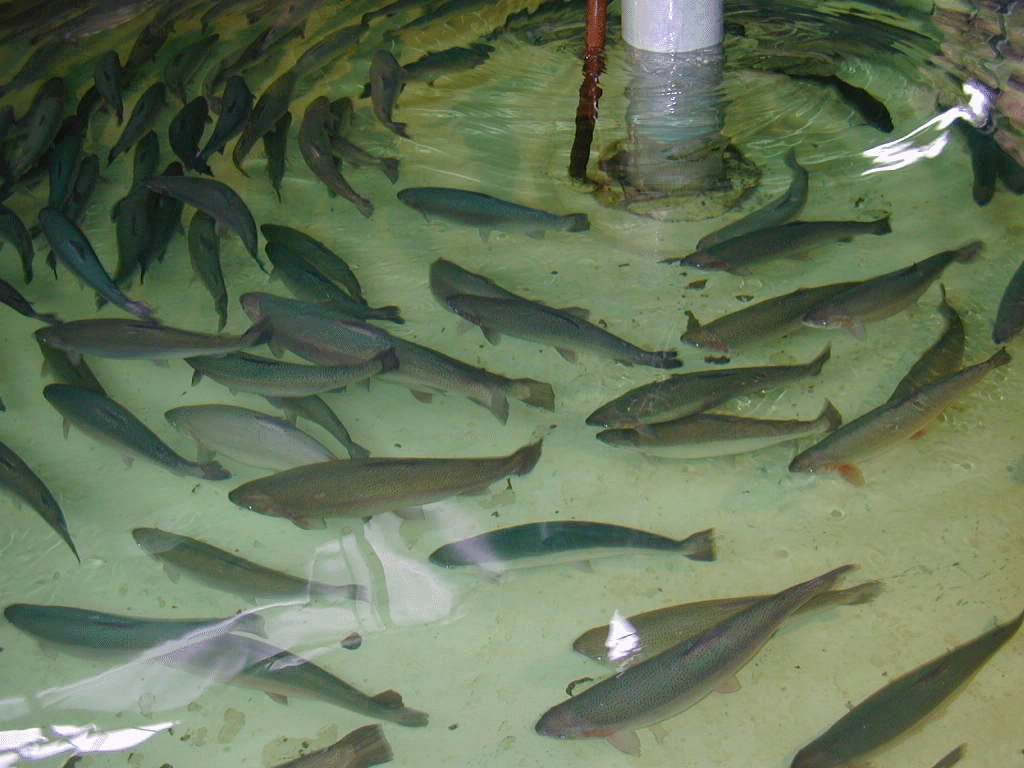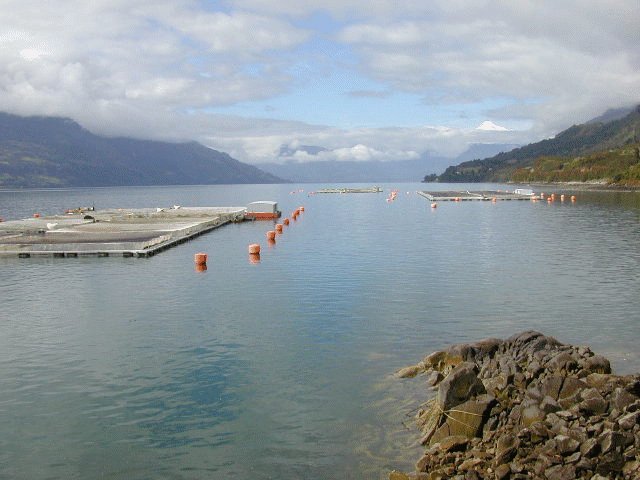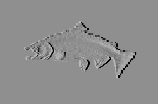 |
For three years, by funds
provided by FONDEF Project D96I1090, and always
aiming to alter (delay/advance) spawning time,
three companies and the University of Concepcion
studied and applied various illumination
protocols on Atlantic Salmon (Salmo salar)
and Rainbow Trout (Oncorhynchus mykiss).
After these experiments, we concluded that the
best of all protocols consisted in applying a
continuous 24 hour pulse of light, during a
specific number of days and time of the year.
This protocol has a great advantage because full
black out is not necessary, therefore
implementing the technique - specially at ocean
farms - is relatively easy, since blacking out
structures at sea are cumbersome, worthless and
very vulnerable. |
|
|
|
|
|
|
|
|
| The method
was originally developed at the University of Stirling´s
Institute of Aquaculture (Scotland) by Prof. Dr. Niall
Bromage and his collaborators, who advised our studies in
Chile. Observations and measurements were analyzed from
various points of view, sampling every one or two months:
behavior, first look, external signs of maturation,
condition factor, water temperature, abdominal palpation,
plasma level of sexual hormones (Oestradiol,
Testosterone, Progesterone and Cortisol), complete
haemogram, susceptibility to - and prevalence of - major
infectious diseases and the effect on the immune system.
The last three because literature suggests that applying
artificial photoperiod produces stress, and therefore
some degree of immunosuppression and hence a greater susceptibility
to infections. |
| |
|
| |
GENERAL
RESULTS. According
to the parameters we used and recorded, our overall
results show that: |
| (1) |
In the specimens exposed
to this particular type of artificial photoperiod
(illumination protocol) there is an advance of sexual
maturation in approximately 5 - 6 months. |
| (2) |
There is a certain
temperature that cannot be exceeded past October, risking
an inhibition of the latest stage of sexual maturation. |
| (3) |
In experimental fish
marginal stress and immunosuppression could be shown at
the end of the illumination protocol. This situation
fortunately reversed quickly afterwards, showing even a
very convenient overshoot in immune activity for several
months. |
| (4) |
No significant increased
susceptibility to SRS and IPN was shown at any point of
the experimental period. Nevertheless a slight increase
of BKD prevalence was shown at the end of the
illumination phase. |
| (5) |
At sea, the lights
attract parasitic copepods (Caligus), therefore
it is convenient to have strict sanitary controls and
management. |
| (6) |
The haemogram showed a
very favorable and unexpected condition in experimental
fish as compared to controls to face summer conditions:
the total number of red blood cells and the total
haemoglobin concentration was significantly higher,
facilitating oxygen transport during summer time (higher
temperature - lower oxygen levels). |
 |
Point 2 of the
above is the most important and delicate, since
it is very difficult - if not impossible - to
control temperature in ocean farms. Possible
solutions for Rainbow Trout and Atlantic Salmon
are discussed below. |
|
| |
|
| |
RAINBOW
TROUT |
| |
Implementing artificial
photoperiod technology for trout is relatively simple
because spawners may be kept in fresh water, therefore
controlling the process is much easier. Besides, Rainbow
Trout (specially males), tend to respond very well. When
the specimens have a certain age (or weight) above a
critical point, the percentage of male and female trout
reacting positively to the treatment is over 85%. To
lower temperatures, water from a deep wells or nearby
springs can be used in conjunction with the normal
affluent water, ideally in a partial recirculation
layout. The use of coolers or chillers is also viable,
even though this implies serious operational costs. |
| |
|
| |
ATLANTIC
SALMON |
 |
For Atlantic
Salmon, witch ideally must be non spawned (SW3 or
SW4), installing the technology at sea farms
represents quite a technological challenge,
needing to solve some serious logistic problems.
The major difficulties involve providing electric
energy to illumination system in the netpen
cages. For energy supply there are two
alternatives, a portable generator or a special
underwater cable (the use of one or the other
depends on the convenience and comparative cost). |
|
| |
At sea, the emission
spectrum of lamps must be able to penetrate deeply in the
12 meter deep water column of cages, therefore the use of
highly sophisticated lamps is necessary for illumination.
If the temperature exceeds the limits, one alternative to
control it is to move the fish to a land based fresh
water culture center (hatchery & smolting facility),
taking special precautions for the possible devolpement
of fungi (Saprolegnia). Alternatively, the fish
can be moved to even more southern latitudes (Coyhaique -
Punta Arenas), where sea temperatures rarely varies and
exceeds the suggested limit. |